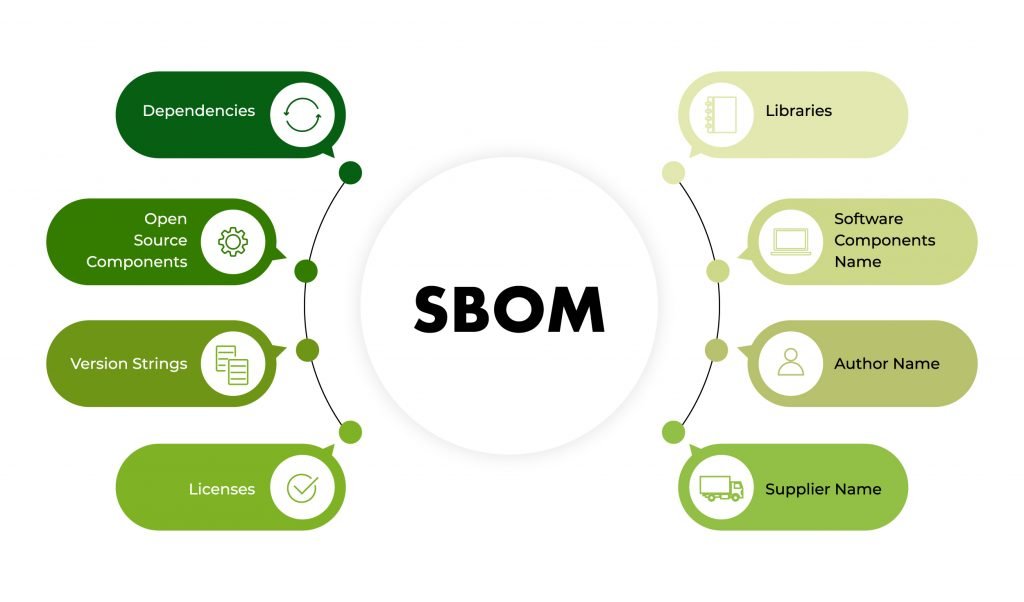A software Bill of Materials lists all of the open source and third-party parts of a codebase (SBOM).
An SBOM also lists the licenses that apply to those components, as well as their versions in the codebase and the status of their patches.
This makes it easy for security teams to find any licensing or security issues that might be related.
A programme A bill of materials is a list of everything that goes into making a product. It comes from the manufacturing industry. Automakers, for example, keep a complete list of all the parts that go into each car.
This bill of materials (BOM) has parts that were bought from different companies and parts that were made by the original equipment manufacturer (OEM).
When a problem is found, the carmaker knows which cars are affected and may let the owners know that they need to fix or replace the car.
Smart software development companies keep an accurate, up-to-date software bill of materials sbom, which includes a list of third-party and open source components, to make sure their code is of the highest quality, compliant, and safe.
Why do businesses need a Bill of Materials that runs on software?
In 2021, there were a number of well-known security holes, the most recent of which involved Apache Log4j, Codecov, and Kaseya. In response to these attacks on the supply chain, President Biden issued an executive order (EO) on cybersecurity.
This set the rules for how federal departments, agencies, and contractors who do business with the government must protect their software.
One of the recommendations said that sboms should make sure that the software programmes used by federal agencies are safe and honest.
Even though the EO is meant for companies that do business with the government, these regulations, including sboms, will likely become the de facto standard for how all companies develop, test, protect, and run their software applications.
Every company that makes software must keep an SBOM for each of its codebases.
When making software, companies usually use a mix of custom-built code, commercial off-the-shelf code, and open source components.
A top software supply chain company’s chief architect said, “We have more than a hundred products, and each of them has hundreds to thousands of different third-party and open source components.”
A software Bill of Materials can help a business keep track of all the parts in its codebase.
What are the parts of a software bill of materials?
An SBOM is a detailed list of all of the open source components in a codebase, along with information about their licenses, versions, and any known security flaws.
The parts that are free to use
Have your programmers use open source parts? Open source lets you get things done faster, cut down on development time, and get your products to clients for less money.
The “Open Source Security Risk and Analysis” (OSSRA) study from 2022 found that 97% of the codebases they looked at used open source.
Even though open source code is just as dangerous as proprietary code, if you don’t protect it properly, your company’s overall security risk goes up.
Few companies know everything about the open source they use, and even fewer can make an accurate, up-to-date Bill of Materials for software that uses open source parts.
In a detailed SBOM, all of the open source components that your applications use, along with their licenses, versions, and patch status, are listed.
The licenses for open source software
Do you know if the open source parts of your apps are licensed in a way that makes it easy to use or makes it hard to use? Are you using a one-time change or one of the most common licenses for open source software?
If a business doesn’t follow its open source licenses, it could face serious legal trouble and put its intellectual property at risk (IP).
More than 53% of the codebases looked at for the OSSRA research had licensing conflicts. The GNU General Public License was the most common source of these conflicts.
Conflicts like this could have a big effect on problems with distribution, disagreements with vendors, and mergers and acquisitions.
A software Bill of Materials gives you an overview of the open source licenses that apply to the parts you use. This lets you figure out what your legal and intellectual property risks are.
Iterations on open source
As far as you know, are the open source parts of your code base kept up to date? When teams use outdated components, components that haven’t been updated in a while, or components from projects where there isn’t enough developer support to keep the code updated, operational risk goes up.
Operational risk can cause problems with the quality, stability, and maintainability of the code, as well as security holes. Threat actors have an easier time breaking into software if developers don’t find and fix bugs.
This also means that they don’t find, report, and fix security flaws. An SBOM lists the versions of open source components used in your code. This can be used to look for code that is out of date or could be dangerous.


